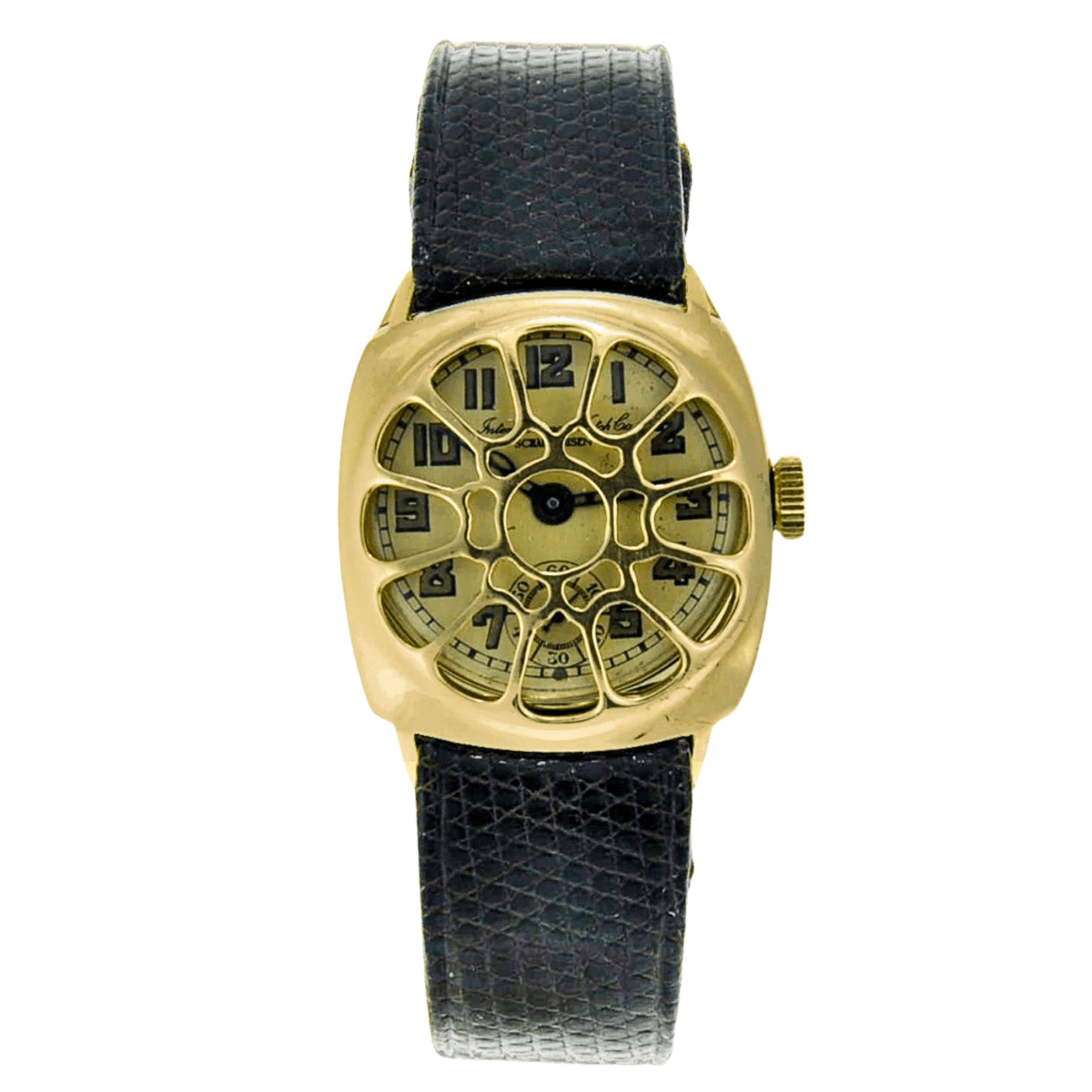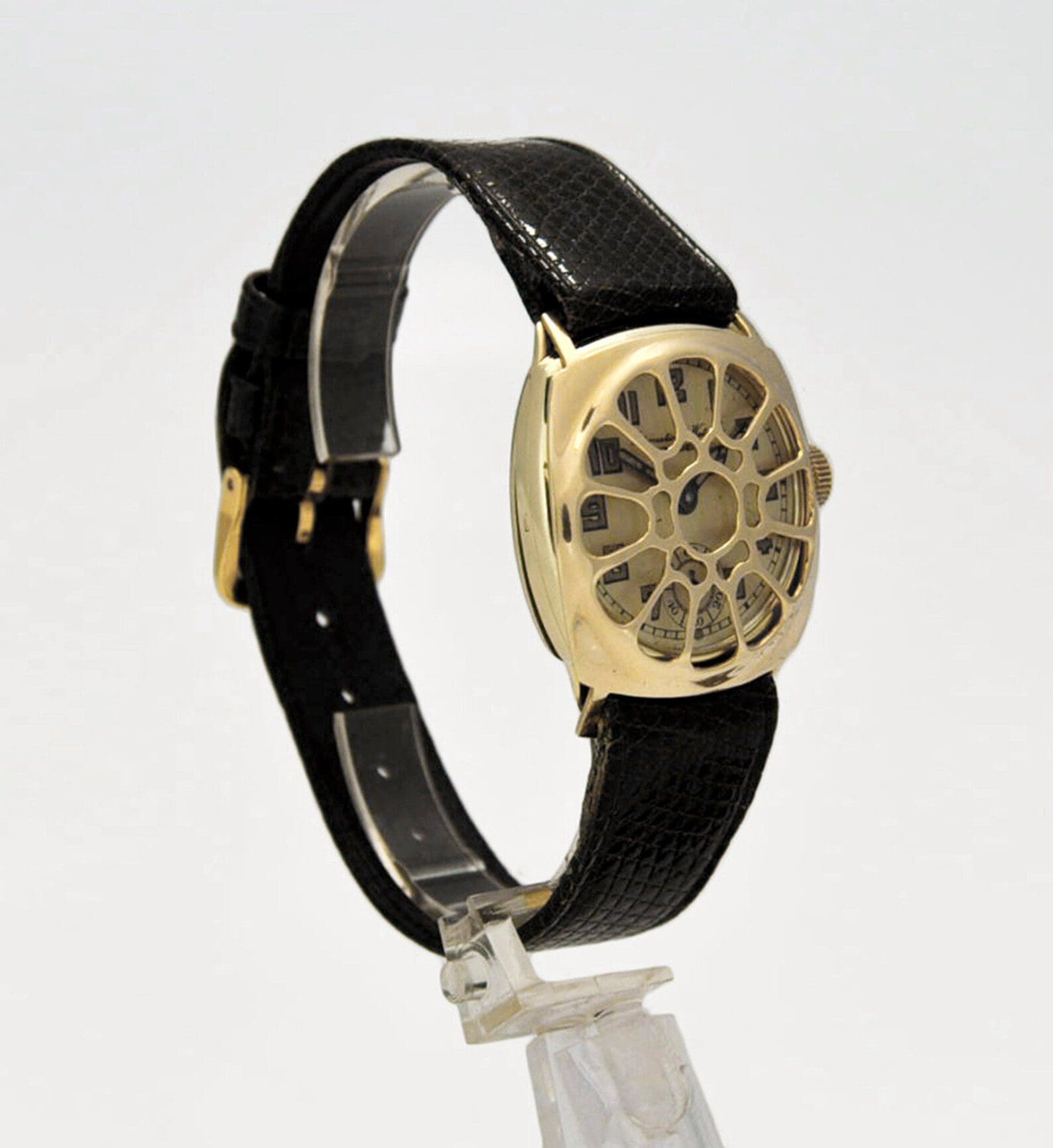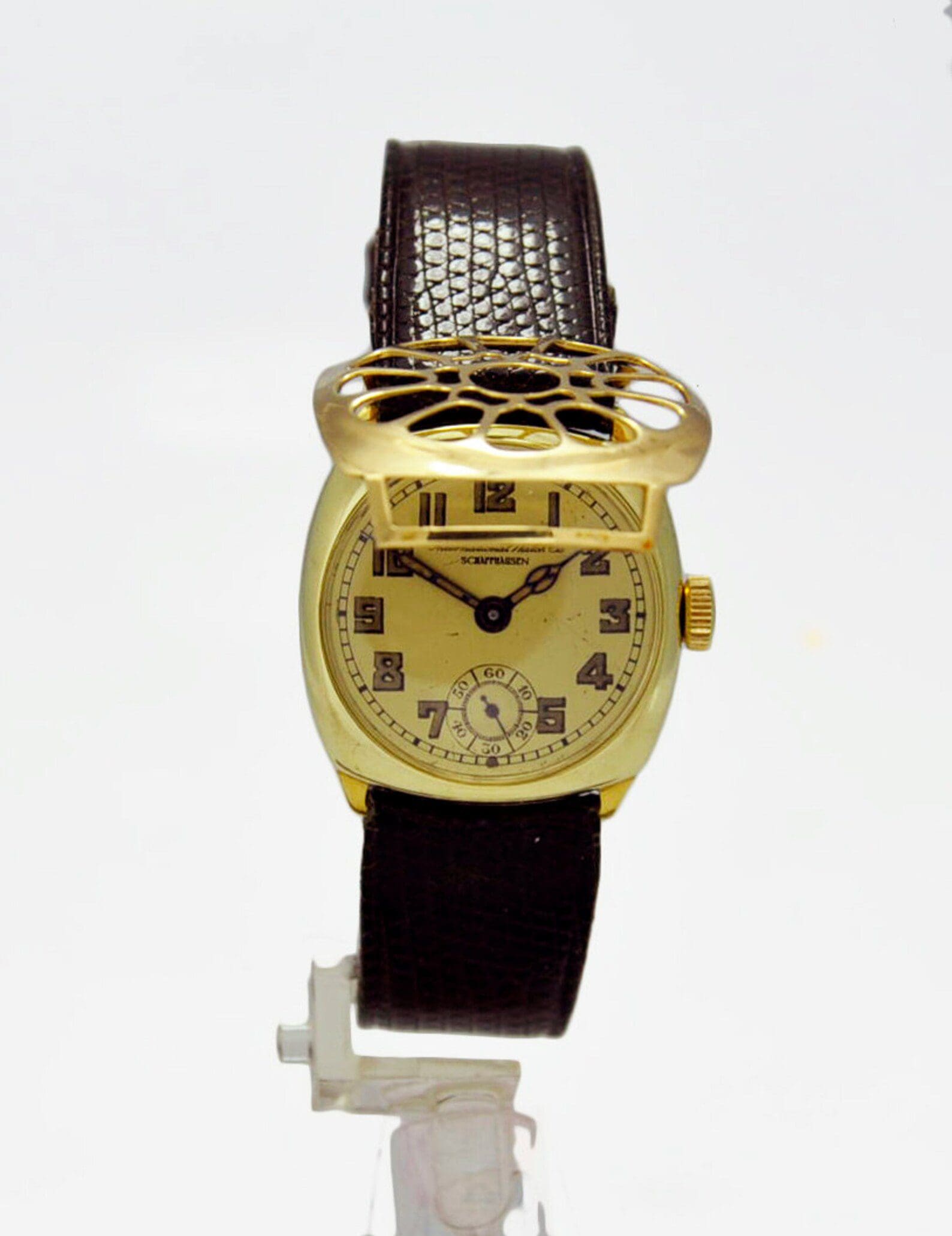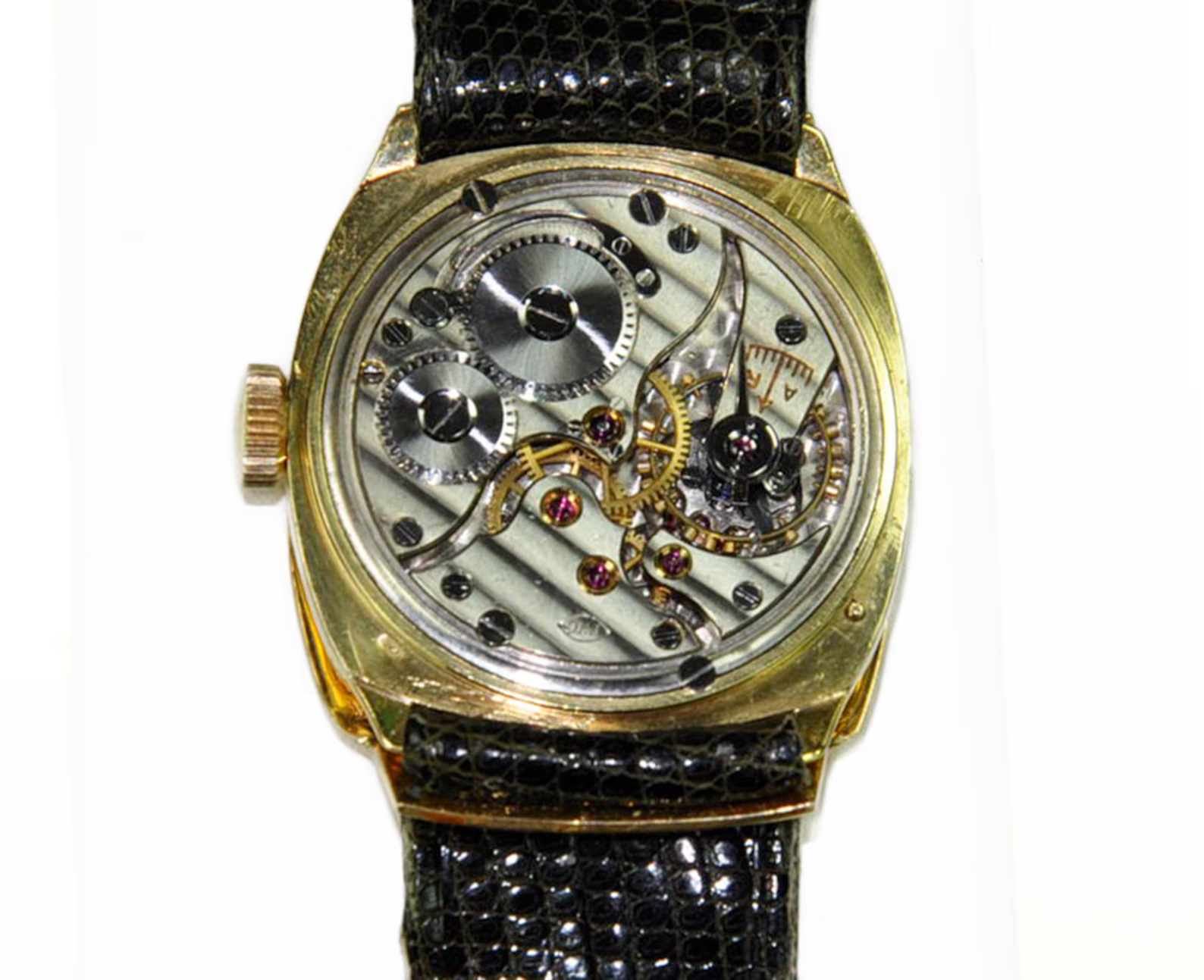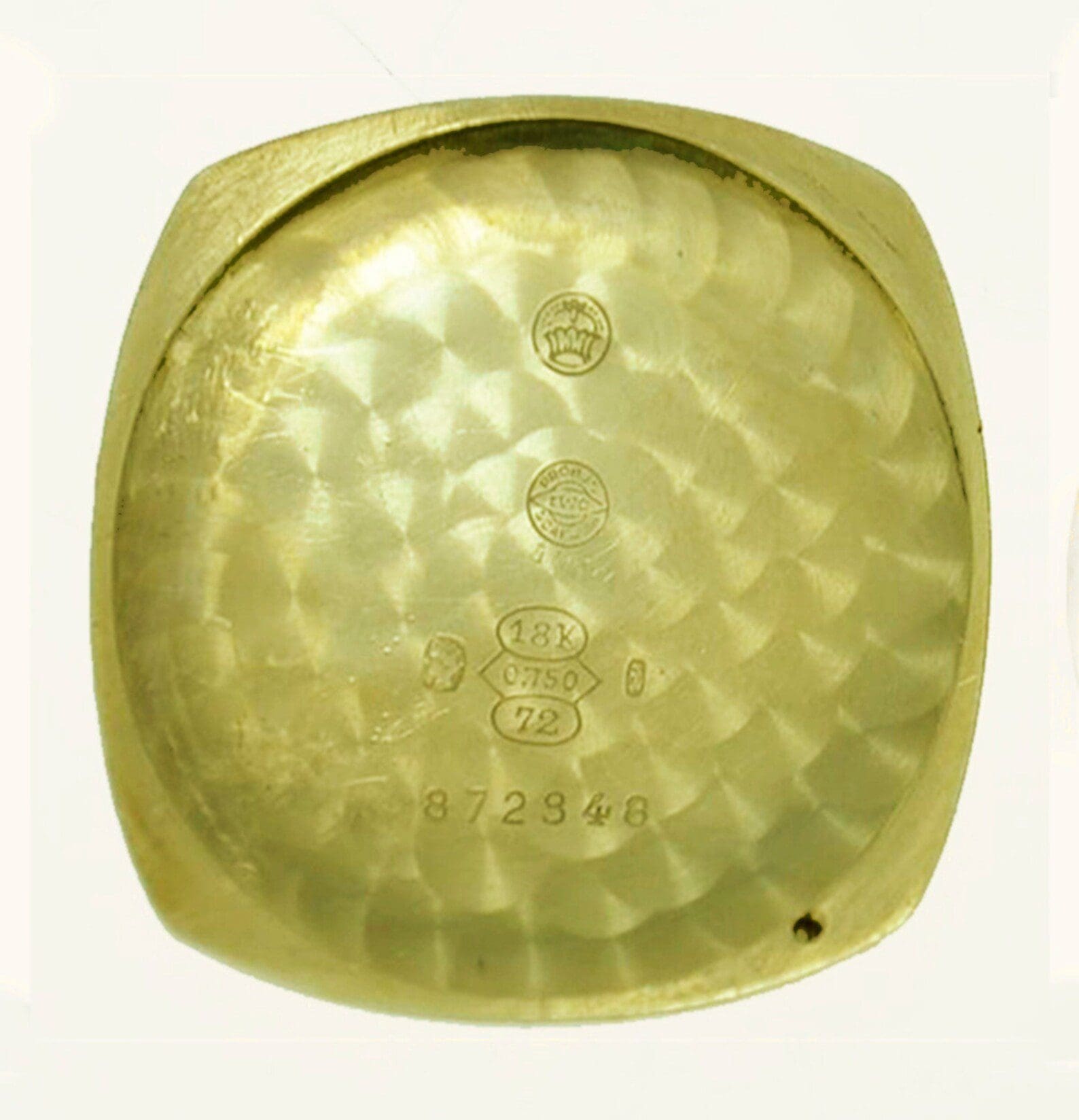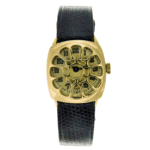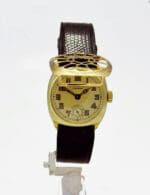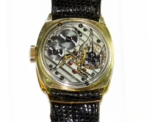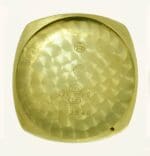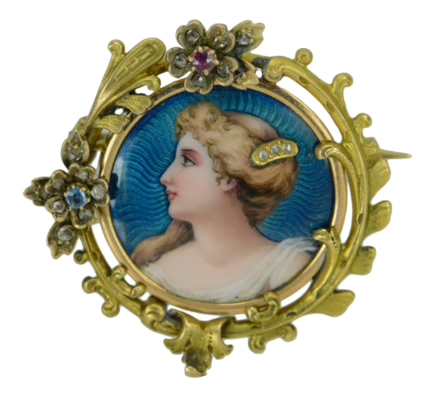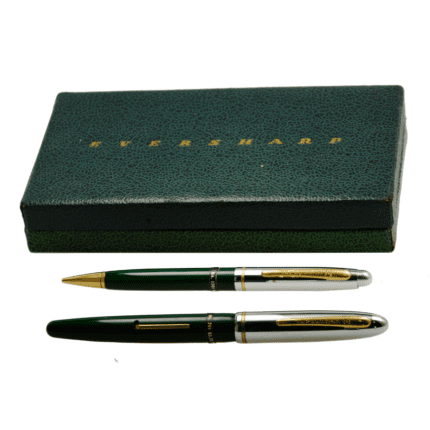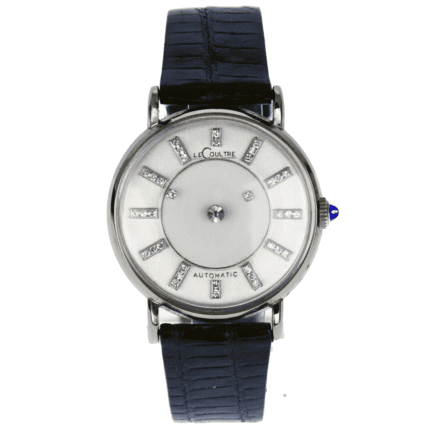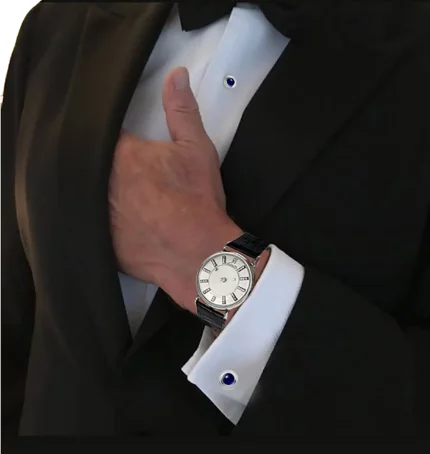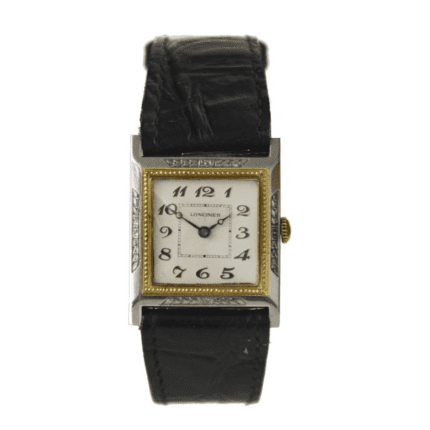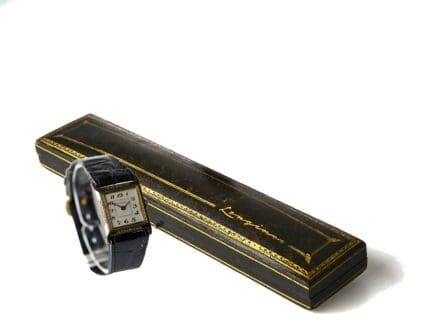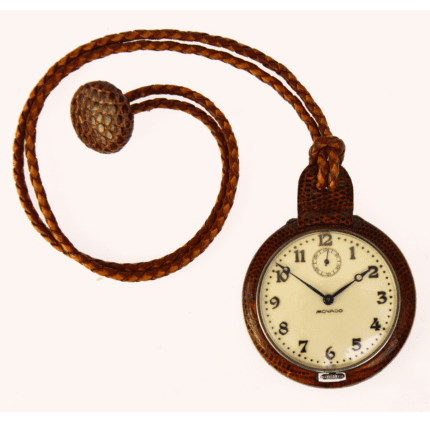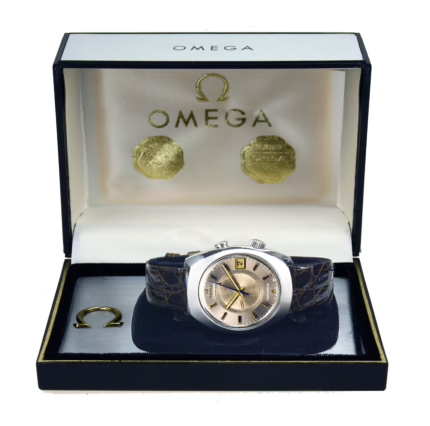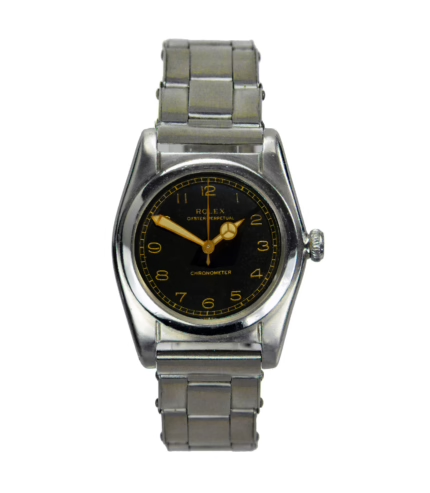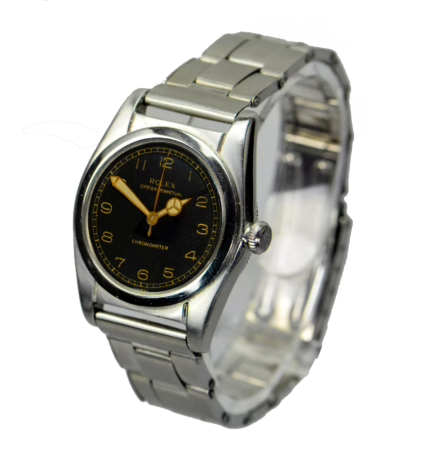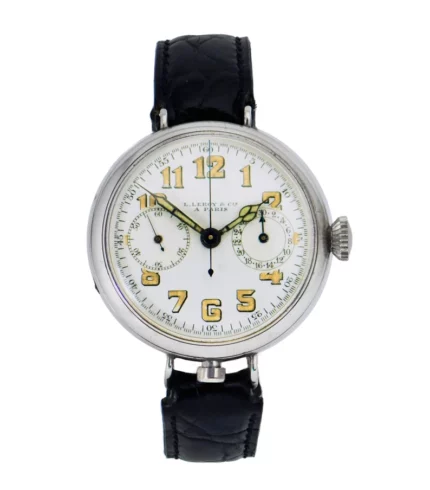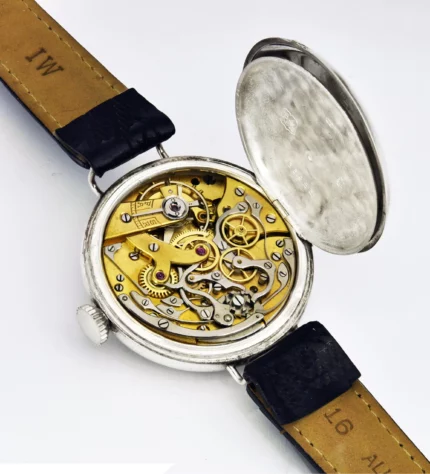International Watch Company Schaffhausen (IWC) 18K Gold World War I Officer’s Wristwatch with Original 18K Shrapnel Guard, Swiss ca 1918
This exceptionally fine, extremely rare and beautiful museum quality IWC Officer’s Trench Watch is the very highest grade that the prestigious IWC International Watch Company produced.
Jeweled down to the center wheel, with a screw-set ruby, this piece is further enhanced by the rarity of its original, fully hallmarked, 18K solid gold shrapnel guard and matching case.
Very few Officers Wristwatches of any brand with solid gold shrapnel guards were manufactured, and even less have survived to the present day, much less examples from IWC. The sober elegance of this extraordinary watch finally is crowned by its beautifully preserved original dial with block skeleton numerals, “poire skélette” hands and new old stock vintage teju bracelet.
- Dimensions: 30 mm (excluding the winding crown) x 34 mm (lug to lug)
- Case signed: IWC with IWC trademark
- Dial signed: International Watch Co, Schaffhausen
- Hallmark: Case and shrapnel guard fully signed with Swiss 18K solid gold marks
- Condition: Excellent
Shipping Worldwide via Courrier Service. Duty-Free Shipping within Europe.
Payment: If you prefer to pay by bank transfer or lay-away, please send us a message. Likewise, if check-out proves unable to process your credit card.
International Watch Company, Schaffhausen history
IWC ranks alongside Patek Philippe, Vacheron&Constantin, Audemars Piguet and Rolex as one of the most iconic, highest quality watch “manufactures”.
It all began in 1868 when Florentine Ariosto Jones, an American engineer and watchmaker, travelled to Switzerland with the intention of founding a watch factory there. He already had the name in mind: “International Watch Company”.
By recruiting a highly-qualified Swiss workforce and combining that with the most modern machines from the United States, he planned to make high-quality mechanisms and watch parts… for the American market.
When, he met Johann Heinrich Moser, a Schaffhausen watchmaker, whose factory produced pocket watches, notably, for the dynasty of Russian tsars, the die was cast. Moser, an industrial pioneer, recently had installed a hydroelectric power station in Schaffhausen, which was driven by the Rhine river. This facility provided inexpensive energy, however to only a handful of clients. It was just what Jones required. So he implanted IWC in Schaffhausen.
In 1869, Jones rented IWC’s first factory premises in a building owned by Moser on Rheinstrasse. Very soon thereafter he also rented additional space in the Oberhaus, one of Schaffhausen’s oldest buildings. By 1874 plans were being drafted for a new factory. A site called the Baumgarten was purchased from Moser’s hydroelectric company, adjacent to the banks of the Rhine. In spring 1875, the construction was completed. Initially 196 people worked in the new 45 meter long factory, which could accommodate up to 300 workplaces.
Production commenced. In addition to being an entrepreneur, Jones was also an excellent watch designer. His first pocket watches with the “Jones caliber” offered exceptional characteristics.
However, only five years later, the company came into Swiss hands. Schaffhausen machine manufacturer, Johannes Rauschenbach-Vogel, took over the “International Uhrenfabrik” on 17 February 1880. Subsequently, four generations of the Rauschenbach family successively owned IWC, under various names.
In fact, only a year after acquiring IWC, Johannes Rauschenbach-Vogel died. His son, Johannes Rauschenbach-Schenk, was 25 years old when he took over the “Uhrenfabrik von J. Rauschenbach”, as it then was called… and ran the Company successfully until his own death on 2 March 1905.
Under his leadership IWC produced remarkable innovations. Notably, in 1885, they manufactured the first “jump hour” (digital display) watches. Also, it wasn’t long before IWC began producing watch mechanisms that, even today, could qualify for official observatory chronometer certification.
Following Johann Rauschenbach-Schenk’s death in 1905, his wife, two daughters and their husbands, Ernst Jakob Homberger (director of G. Fischer AG in Schaffhausen) and Dr. Carl Jung (the famous psychiatrist), became the new owners of IWC.
Following the death of his father-in-law, Ernst Jakob Homberger exercised considerable influence on IWC’s affairs. He also guided IWC through one of the most turbulent epochs in Europe’s history, while producing fine wristwatches for frontline officers.
During the 1930’s, IWC presented the first watch with antimagnetic mechanism, especially designed for aviators. In 1940 their Big Pilot’s wristwatch marked another important milestone. Towards 1948, the Mark 11 appeared armored against magnetic fields. This protection would be later used by the IWC “Ingenieur” and still today by many IWC watches. The IWC 1955 Ingenieur equipped with IWC’s patented automatic winding mechanism was the most advanced of its time. Edmund Hillary climbed the highest mountains with it. Further iconic IWC wristwatches followed, including the Yatch Club and Ingenieur SL during the sixties and seventies, and the Aquatimer in 1967.
1969 saw IWC present its first quartz wristwatch, the Da Vinci. It was fitted with the same Beta 21 caliber movement employed by Patek Philippe, Rolex. Audimars Piguet, Jaeger-LeCoultre, Piaget and Omega.However, due to the then industry-wide crisis, IWC avoided heavy investment in this technology and went back to produce what it was best at – mechanical movements of great technical refinement.
Today, IWC is most famous for its Pilot as well as Portugese lines of watches.The Company has approximately 390 employees and, since 2000, is part of Richemont SA’s watch division, alongside watch brands that include Cartier, Vacheron & Constantin and Piaget.


